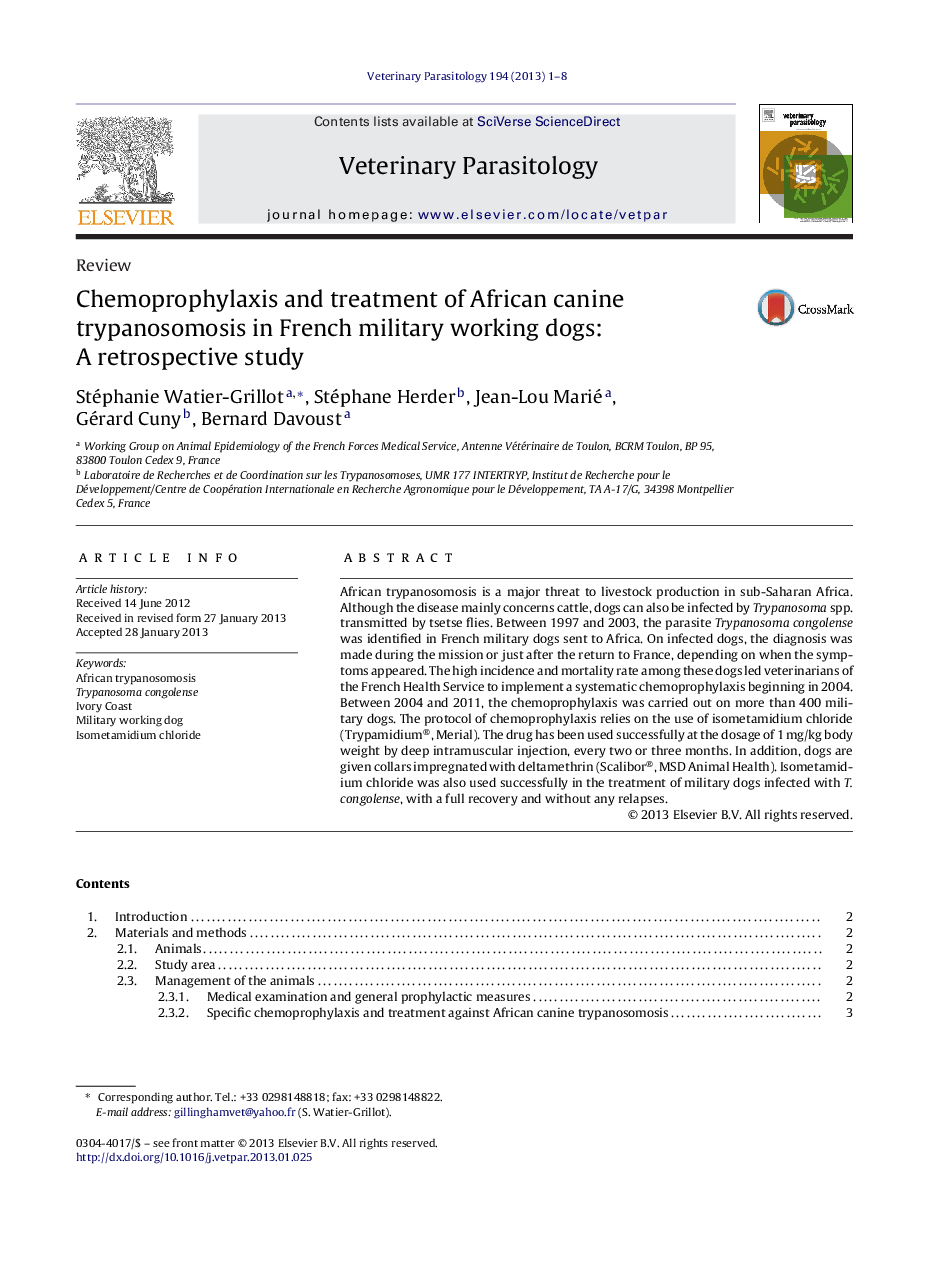| Article ID | Journal | Published Year | Pages | File Type |
|---|---|---|---|---|
| 5804064 | Veterinary Parasitology | 2013 | 8 Pages |
African trypanosomosis is a major threat to livestock production in sub-Saharan Africa. Although the disease mainly concerns cattle, dogs can also be infected by Trypanosoma spp. transmitted by tsetse flies. Between 1997 and 2003, the parasite Trypanosoma congolense was identified in French military dogs sent to Africa. On infected dogs, the diagnosis was made during the mission or just after the return to France, depending on when the symptoms appeared. The high incidence and mortality rate among these dogs led veterinarians of the French Health Service to implement a systematic chemoprophylaxis beginning in 2004. Between 2004 and 2011, the chemoprophylaxis was carried out on more than 400 military dogs. The protocol of chemoprophylaxis relies on the use of isometamidium chloride (Trypamidium®, Merial). The drug has been used successfully at the dosage of 1Â mg/kg body weight by deep intramuscular injection, every two or three months. In addition, dogs are given collars impregnated with deltamethrin (Scalibor®, MSD Animal Health). Isometamidium chloride was also used successfully in the treatment of military dogs infected with T. congolense, with a full recovery and without any relapses.
